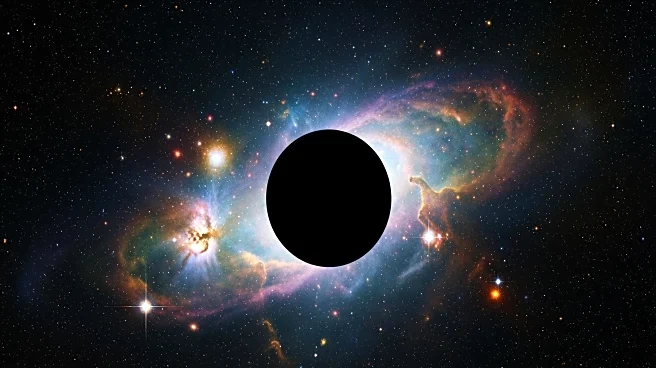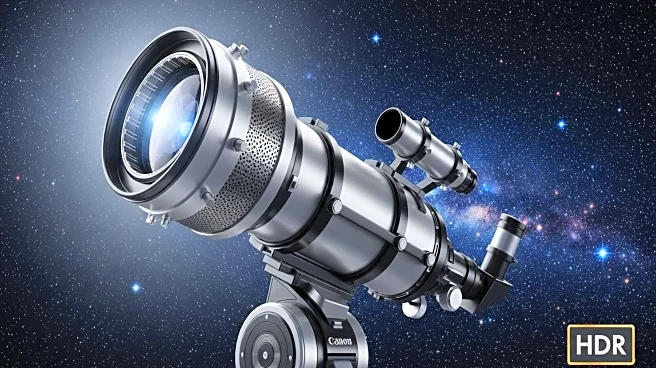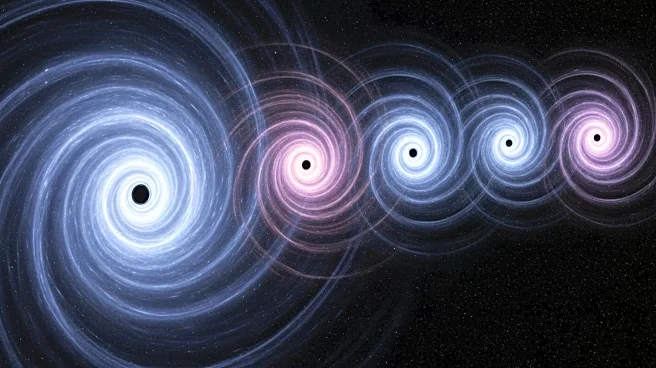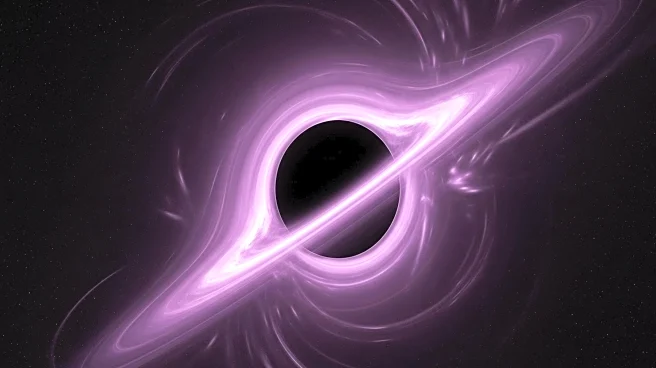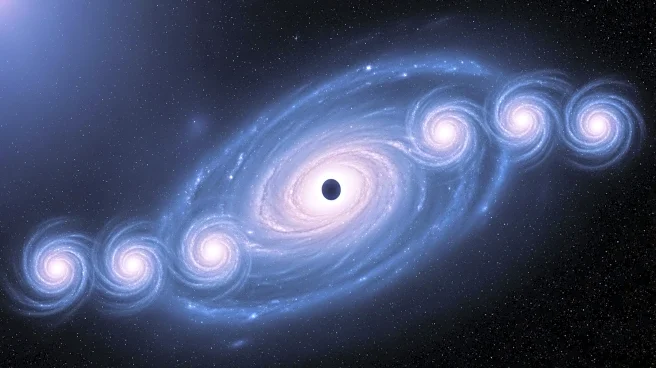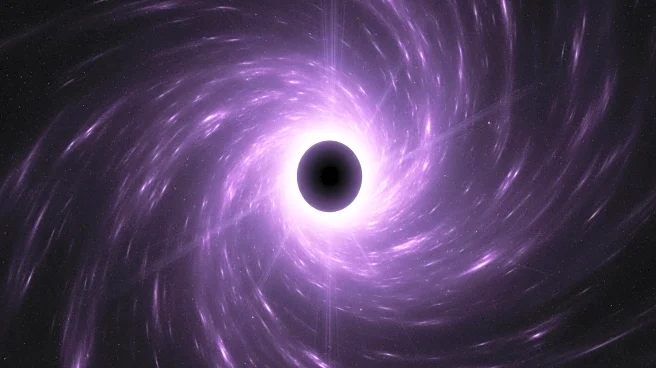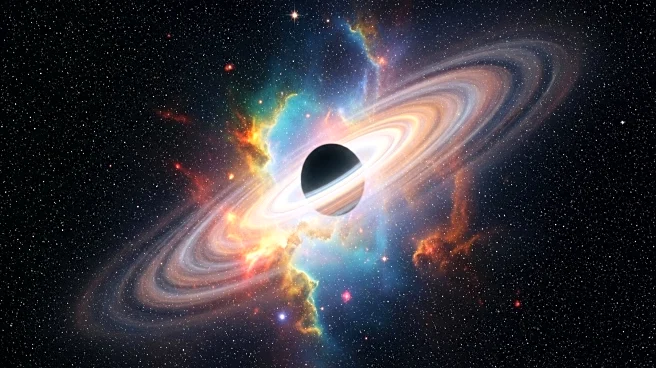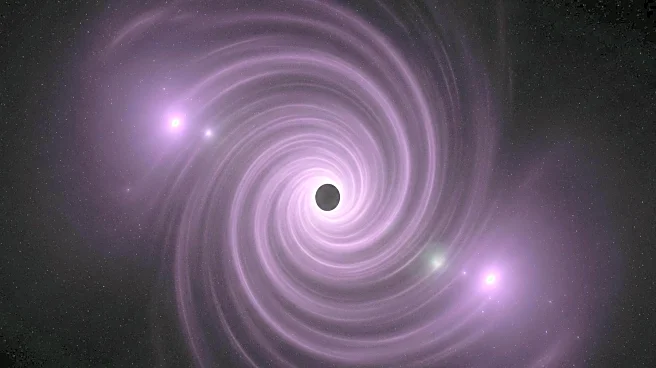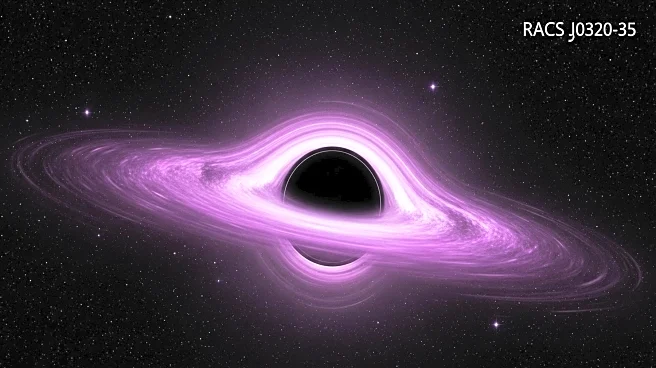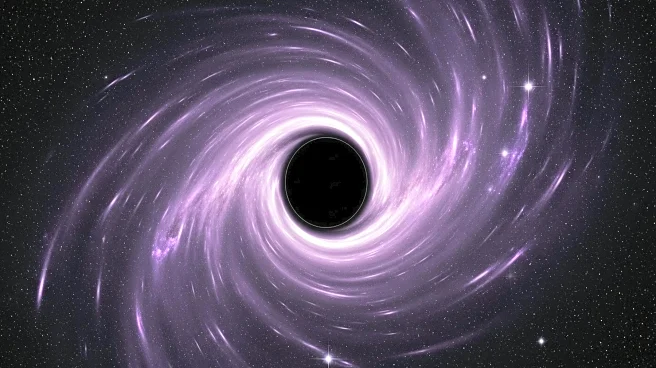What's Happening?
A new analysis suggests that some mysterious objects in the early Universe, known as 'little red dots' (LRDs), could be supermassive black holes enveloped in dense gas clouds. This theory addresses the puzzling 'Balmer break' in the light spectrum of these objects, which makes them appear older than possible given their epoch. The research, led by astrophysicist Anna de Graaff, proposes that these LRDs are not galaxies but rather 'black hole stars'—supermassive black holes surrounded by hydrogen gas, mimicking the appearance of stars. This model offers a plausible explanation for the observed spectral features without contradicting current understanding of cosmic evolution.
Why It's Important?
The concept of black hole stars could revolutionize our understanding of the early Universe and the formation of cosmic structures. If proven, this model would provide a new perspective on the nature of LRDs and their role in the Universe's evolution. It challenges existing theories about galaxy formation and the timeline of stellar evolution, potentially leading to new insights into the behavior and characteristics of supermassive black holes. This research could also inform future studies on the interaction between black holes and their surrounding environments.
Beyond the Headlines
The idea of black hole stars raises intriguing questions about the formation and evolution of such objects. It suggests a complex interplay between black holes and their gaseous surroundings, which could have implications for understanding active galactic nuclei and the lifecycle of matter in the Universe. Further research is needed to explore the formation mechanisms and long-term stability of black hole stars, as well as their impact on surrounding cosmic structures.

